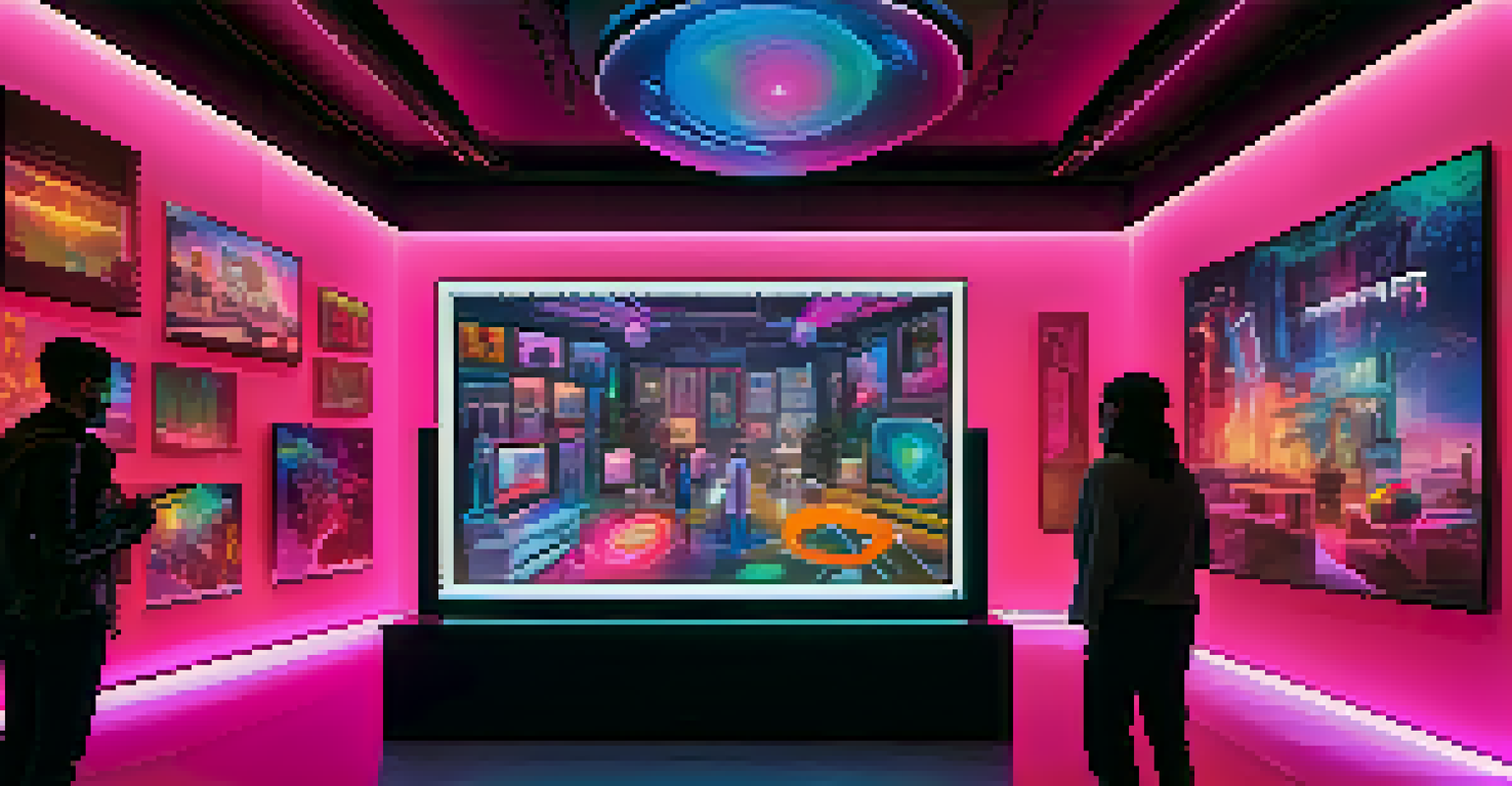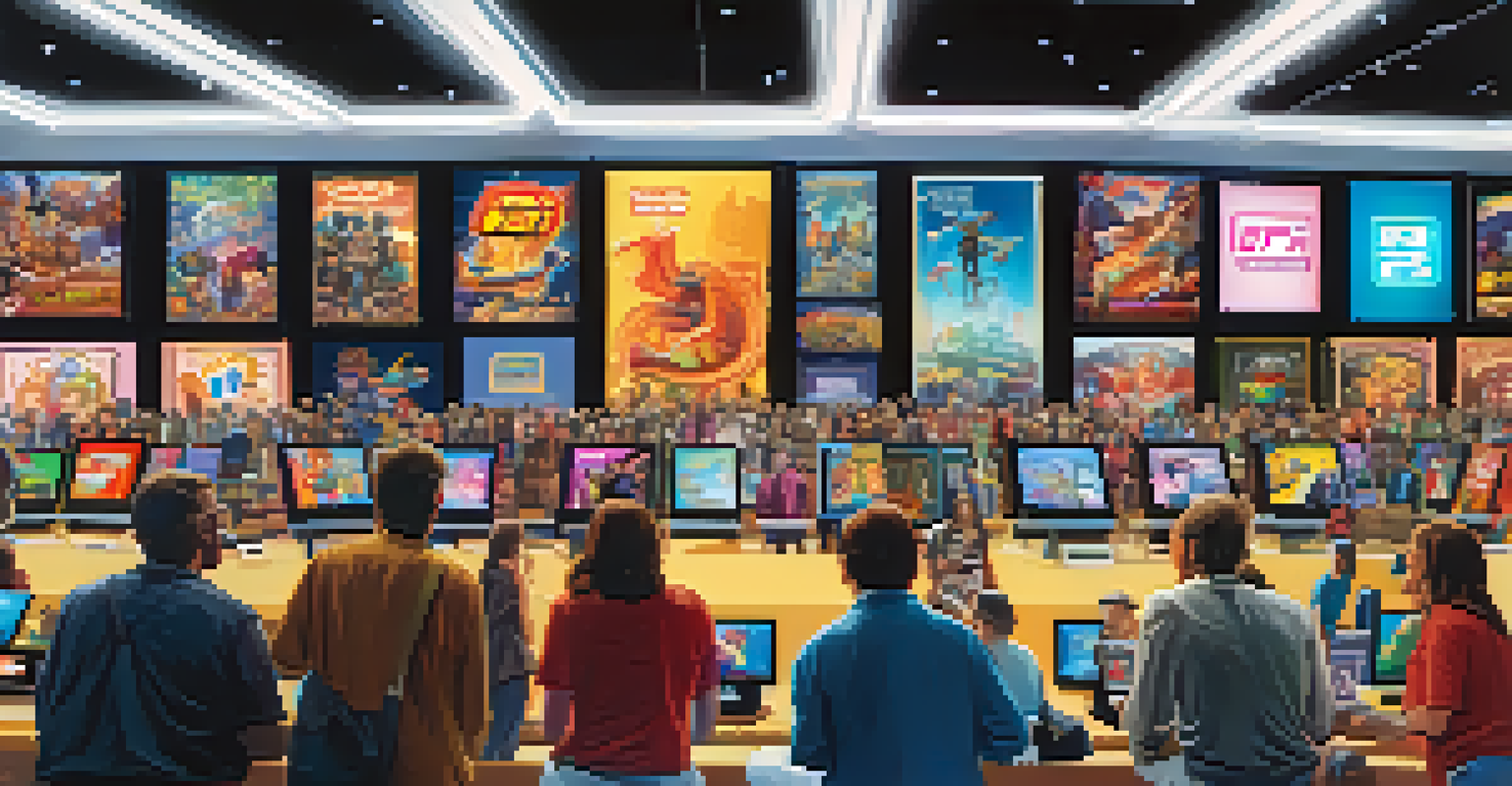NFTs and Digital Scarcity: A New Era of Collectible Ownership

Understanding NFTs: The Basics of Digital Ownership
Non-Fungible Tokens, or NFTs, are unique digital assets verified using blockchain technology. Unlike cryptocurrencies like Bitcoin, which are interchangeable, each NFT has distinct information that makes it one-of-a-kind. This uniqueness is what gives NFTs their value in the digital marketplace.
NFTs are a new way to own digital art and collectibles, creating a bridge between artists and collectors in a way that was previously impossible.
At their core, NFTs can represent anything from digital art and music to virtual real estate and collectibles. Imagine owning a digital painting that no one else can claim, much like having a rare painting hanging in your living room. This concept of ownership is a game-changer for artists and creators, allowing them to monetize their work directly.
The rise of NFTs is not just a trend; it signifies a shift in how we perceive ownership and value in the digital realm. As more people embrace this technology, the possibilities for personal expression and investment expand, making it crucial to understand how NFTs operate.
Digital Scarcity: The Heart of NFT Value
Digital scarcity is a fundamental principle behind the value of NFTs. In the physical world, items like rare coins or vintage toys are valuable precisely because they are limited in quantity. Similarly, NFTs use blockchain technology to create a limited supply of digital items, ensuring that only a certain number exist.

This scarcity not only enhances the desirability of NFTs but also establishes a new paradigm for collectors. For instance, owning a limited edition NFT of a famous artwork can often be as thrilling as owning the original piece. The emotional connection to owning something rare drives the market, fostering competition among collectors.
NFTs Redefine Digital Ownership
Non-Fungible Tokens allow for unique digital ownership, transforming how artists monetize their work and how collectors invest.
Moreover, the concept of digital scarcity challenges traditional notions of ownership. In a world where digital items can be infinitely copied, NFTs offer a way to claim 'true' ownership of a digital asset, making them appealing to both collectors and investors alike.
The Role of Blockchain in NFT Authentication
Blockchain technology is the backbone of NFTs, providing a decentralized and secure ledger that records ownership and transaction history. Each NFT is stored on a blockchain, which acts like a digital certificate of authenticity. This means that buyers can verify the legitimacy of their purchase without relying on a third party.
The future of NFTs holds the potential to redefine ownership in a digital world that craves authenticity.
For example, when you buy an NFT, the transaction is recorded on the blockchain, ensuring that there’s a permanent record of ownership. This transparency builds trust within the marketplace, allowing buyers to feel confident in their investments. It’s akin to having a title deed for a house, providing proof that you own it.
Additionally, the immutability of blockchain ensures that once an NFT is created, it cannot be altered or duplicated. This feature solidifies the concept of ownership and authenticity, which is essential in a digital landscape often plagued by piracy and counterfeit items.
NFTs in the Art World: A New Canvas for Creators
The art world has been significantly impacted by the rise of NFTs, transforming how artists create, sell, and distribute their work. Traditional gatekeepers, such as galleries and auction houses, have been disrupted, as artists can now showcase their work directly on digital platforms. This democratization allows more voices to be heard in the art community.
For instance, artists can mint their digital artworks as NFTs and sell them on platforms like OpenSea or Rarible, reaching a global audience. This direct-to-consumer model not only maximizes an artist's profit but also fosters a deeper connection with their audience. Collectors can support their favorite artists while owning a piece of their creativity.
Scarcity Drives NFT Value
Digital scarcity, created through blockchain technology, enhances the desirability of NFTs, challenging traditional views on ownership.
Moreover, NFTs enable artists to earn royalties on future sales of their work. This means that every time an NFT changes hands, the original creator can receive a percentage of the profits. This ongoing income stream can provide financial stability for artists, encouraging them to continue creating.
Collectible NFTs: Merging Digital and Physical Worlds
Collectible NFTs are revolutionizing the way people engage with their hobbies and interests, merging the digital and physical worlds. From virtual trading cards to digital fashion, these collectibles allow fans to own a piece of their favorite franchises in a completely new way. Imagine possessing a rare digital trading card that can be displayed in a virtual showcase.
This trend has led to partnerships between traditional brands and NFT platforms, creating exciting opportunities for collectors. For example, sports organizations are now releasing limited edition NFTs featuring iconic moments or player highlights, giving fans a novel way to commemorate their passion. These digital collectibles can also appreciate in value over time, just like their physical counterparts.
Furthermore, the integration of augmented reality (AR) can enhance the collectible experience. Imagine showcasing your NFT in your living room through AR technology, allowing you to interact with your collection in a more immersive way. This unique blend of digital and physical engagement is reshaping the collectibles landscape.
The Potential Risks and Challenges of NFTs
While NFTs present exciting opportunities, they also come with risks and challenges that potential buyers should consider. The market is still relatively new and can be highly volatile, with prices for certain NFTs fluctuating dramatically. It’s essential to do thorough research before investing, as what seems like a good deal today may not hold value tomorrow.
Additionally, the environmental impact of blockchain technology has raised concerns. The energy consumption associated with minting and trading NFTs can be substantial, leading to debates about sustainability in the digital art space. As the demand for NFTs grows, so does the necessity for eco-friendly solutions, which is a challenge the industry must address.
Risks in the NFT Market
While NFTs offer exciting opportunities, potential buyers must navigate market volatility, environmental concerns, and the risk of scams.
Lastly, the potential for scams and fraud in the NFT space is a reality that buyers need to be aware of. With the excitement surrounding NFTs, some individuals may attempt to take advantage of unsuspecting buyers. It’s crucial to purchase from reputable platforms and verify the authenticity of the NFTs before making a transaction.
The Future of Digital Ownership and NFTs
As we look to the future, the landscape of digital ownership and NFTs appears promising yet uncertain. The technology is evolving rapidly, and new applications for NFTs are continually emerging, from virtual reality experiences to gaming assets. This evolution could lead to even broader acceptance of NFTs as a standard form of ownership in the digital age.
Moreover, as more industries explore the potential of NFTs, we may see increased collaboration between creators, brands, and consumers. For instance, the real estate sector is starting to dip its toes into NFT ownership, allowing individuals to buy and sell property digitally. This could redefine property ownership and streamline transactions.

Ultimately, the question remains: how will society adapt to this new era of digital scarcity and ownership? As we continue to explore the implications of NFTs, one thing is clear: they are not just a passing trend but a significant shift in how we value and interact with digital creations.